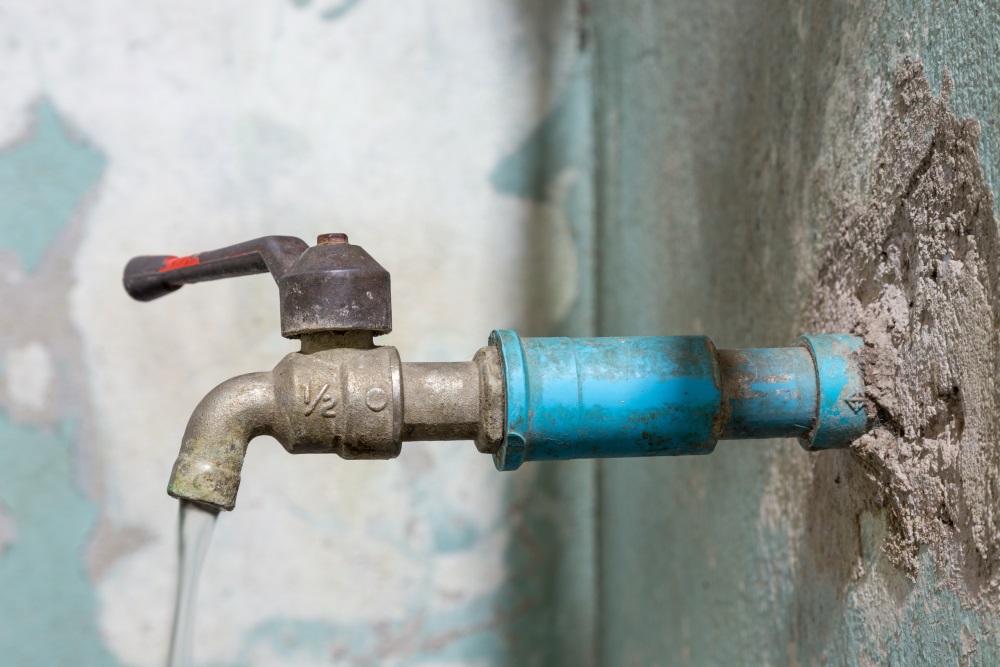There is mounting evidence that many countries and many regions have been underinvesting in the maintenance, operation and construction of the infrastructure needed to supply adequate water and sanitation services. One of the reasons for this under-investment is the huge cost of repairing existing distribution systems and the cost of building new ones. In the meantime, a significant proportion of the world’s people go without access to adequate water and sanitation services. A much larger proportion of the world is served by poorly functioning water supply and sanitation. The costs of this lack of quality access are significant.
When push comes to shove, governments find it hard to find the money needed to finance the provision of water supply and sanitation services. Too often, other priorities get in the road. Subsidies come at a cost. When a government subsidises water use, it can’t subsidise other things?

In a paper to be presented at the GGKP conference in Venice on 29th January 2015, I ask the questions: Who benefits most from the provision of subsidised access to water? and what is the best way to deliver these subsidies?
Affordable access to water is a human right and the human right argument is used to justify the provision of subsidised access to the water needed to meet essential household. No-one, some argue, should have to spend more than 5% of their household budget on water.
In countries like South Africa, the default policy position is that everyone be supplied with free access to the water they need for drinking, washing, etc. In the Australian city where I live, three pricing tiers are used to provide access to water. Every household is given access to the first 0.33 kilolitres per day at a very low cost. The price charged for access to the first tier is $1.00 per kilolitre less than amount charged for access to the second tier.
Inclining block tariff arrangements, like the one used in Adelaide, are common. In fact, surveys suggest that around 70% of towns and cities in the developing world use an inclining block tariff charging regime. Inclining block tariff charging regimes are also used in most developed economies.
Do inclining block tariff regimes really deliver benefits to the poor? Water is heavy and expensive to move around. It takes a lot of water to provide $50 of benefit. Moreover, once a water utility gets behind on maintenance, it can take a long time to catch up. In the meantime, all suffer. If the politics of budgeting processes results typically in the decline of service quality and the denial of access to needy people, why have them?
One argument is that the provision of subsidised access to water is an efficient way to assist poor people. This would be true if there was a strong correlation between water use and income.
Evidence of a strong correlation between water use and household income is difficult to find. This means that much of the money used to subsidise access to water ends up in the hands of wealthy people.
I am reasonably well paid and live in a house with one other person, a tiny garden and a few pot plants. We benefit enormously from the provision of access to cheap water but why should we benefit from access to cheap water? Consider the impact of the current scheme on a much poorer household living around the corner with five people living in it. This household will consume much more water than we do and because our water utility does not know how many people live a household this poor household ends up subsidising my water bill. At the end of the day, my water utility has to balance its budget. It does so by forcing larger, poorer households to subsidize the cost of giving me access to cheap water.
Modelling routinely shows that the main beneficiaries of water charging subsidies tend to be people in middle and upper income groups. In fact, quite a few pricing regimes involve financial transfers from the poor to middle and upper income households. The situation is worse when governments contribute a significant proportion of the total cost of supplying access to water and sanitation services. It is worst when household income and water use are strongly correlated and an inclining block tariff scheme is used and overall use is subsidised. In one study that has just been published, poorest 20% of households only get 5% of the benefit while the wealthiest 20% of households get 40% of the benefits.
If governments should provide access to water for all, why not charge everyone the full cost of providing access and then run a separate means-tested water-access-assistance program that enables poor households to get affordable access to water? I would then get no subsidy and have an incentive to search for ways to save water. The large, low-income household around the corner from me could then get access to the financial assistance that they need. Insulated from government budgeting processes, my water utility could then, without having to go back to government, ensure that all have access to low-cost reliable water services.
One of the recommendations that I will make at the GGKP conference is that governments should decouple water charging arrangements from those needed to provide financial assistance to dis-advantaged households. When separate instruments are used to achieve social and economic objectives, prospects for inclusive economic development increase.
Fiscal discipline might end up being the friend not the foe of those interested in water security and increase opportunities for the most disadvantaged.
If you are interested in learning more about the almost complete failure of most water charging regimes to assist poor and dis-advantaged households, I recommend reading a paper in Utilities Policy that has just been released by Dale Whittington and his colleagues.
Reference
Whittington, D.; Nauges, C.; Fuente, D. and Wu, X.( 2015) A diagnostic tool for estimating the incidence of subsidies delivered by water utilities in low- and medium-income countries, with illustrative simulations. Utilities Policy (in press) Available on line at http://www.sciencedirect.com/science/article/pii/S0957178714000988

